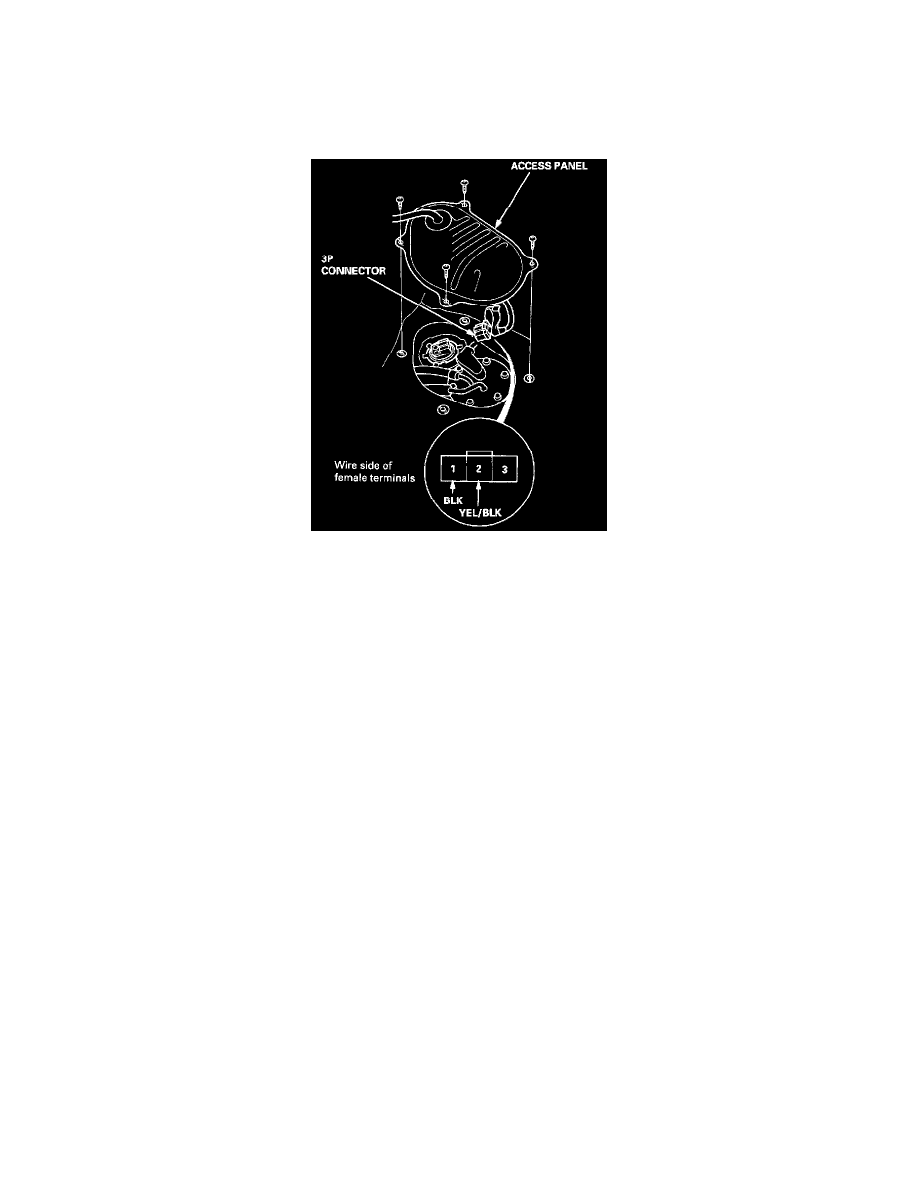Civic CX Hatchback L4-1590cc 1.6L SOHC MFI (1997)

Fuel Gauge Sender: Testing and Inspection
WARNING: Do not smoke while working on the fuel system. Keep open flame away from your work area.
NOTE: Refer to fuel gauge system circuit.
1. Check the No.25 (7.5 A) fuse in the under-dash fusel relay box before testing.
2. Remove the access panel from the floor.
3. Disconnect the 3P connector from the fuel gauge sending unit.
4. Connect the voltmeter positive probe to the No.2 terminal and the negative probe to the No.1 terminal, then turn the ignition switch ON (II). There
should be between 5 and 8 V.
-
If the voltage is as specified, go to step 5.
-
If the voltage is not as specified, check for:
-
an open in the YEL/BLK or BLK wire.
-
poor ground (G552).
5. Turn the ignition switch OFF.
6. Attach a jumper wire between the No.1 and No.2 terminals, then turn the ignition switch ON (II).
7. Check that the pointer of the fuel gauge starts moving toward the "F" mark.
CAUTION: Turn the ignition switch OFF before the pointer reaches "F" on the gauge dial. Failure to do so may damage the fuel gauge.
NOTE: The fuel gauge is a bobbin (cross-coil) type, hence the fuel level is continuously indicated even when the ignition switch is OFF, and the
pointer moves more slowly than that of a bimetal type.
-
If the pointer of the fuel gauge does not move at all, replace the gauge.
-
If the gauge is OK, inspect the fuel gauge sending unit.
